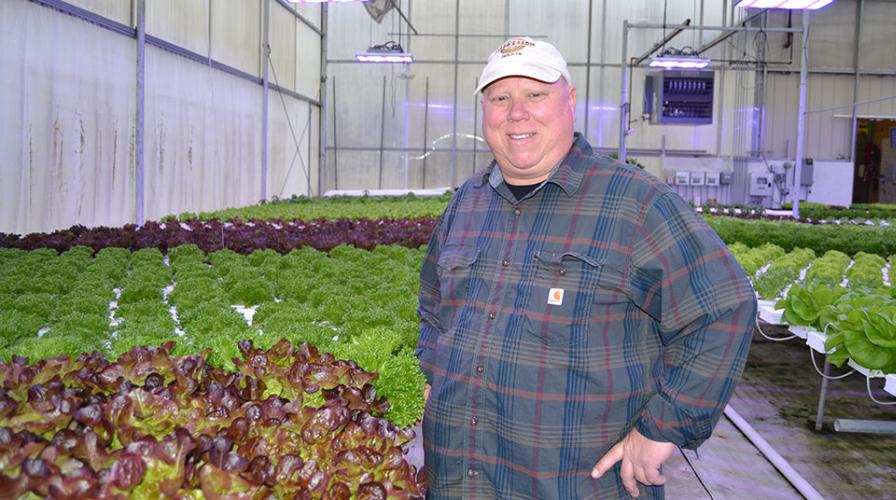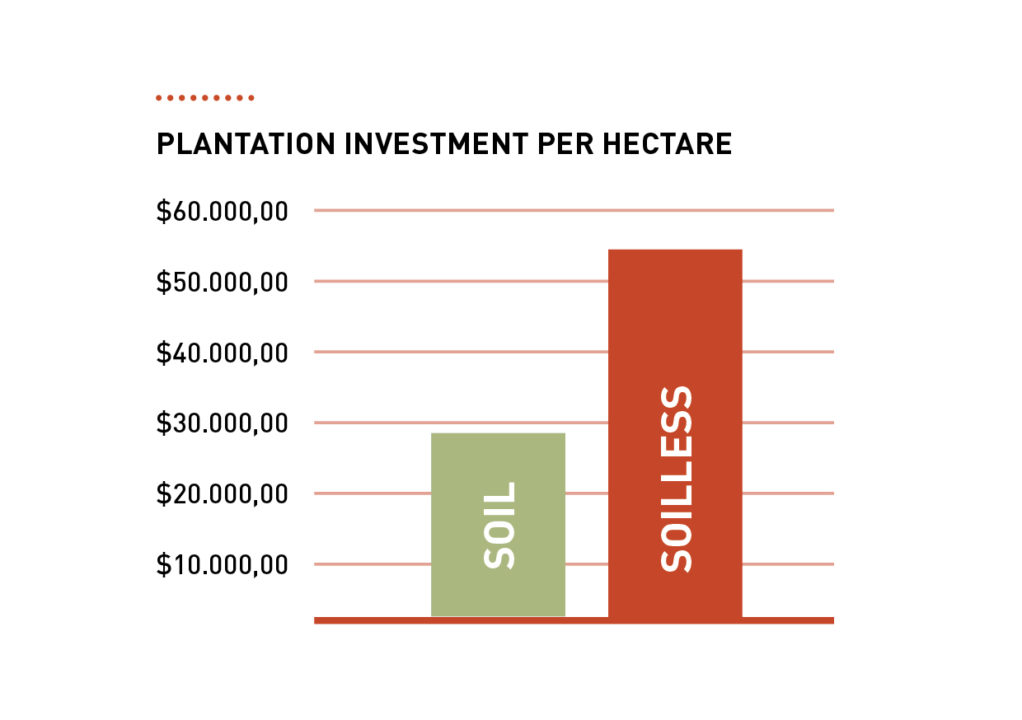Thinking Hydroponically Helps This Leafy Greens Grower Take Charge

Tyler’s Farm owner Tyler Gogolek: “The only problem I see with hydroponics is basically the overhead. If you have a passion for it, go for it.”
Photo by Thomas Skernivitz
The drought of 1988, having covered much of the U.S., no doubt scared off more farmers than it spawned. Tyler Gogolek, then a teenager living in Northeast OH, saw it as a challenge — one with a Dust Bowl-sized caveat.
“That’s when I recall noting that I wanted to be a farmer,” he says. “However, I needed to control the weather.”
Thirty-five years later, Gogolek runs his own business and, in a sense, really does dictate the weather from inside a greenhouse. As the owner of Tyler’s Farm in Oberlin, OH, he and his family have been growing hydroponic lettuce and greens on a year-round basis since December 2014.
“This allows me to do eight to nine turns of lettuce a year compared to three or four outside,” Gogolek says. “Hydroponics also allows for crop versatility. Anything that has a fibrous root system, you can pretty much dabble with and give it a shot.”
Tyler’s Farm revolves around a nutrient film technique (NFT) system. Other hydroponic options include deep water culture (DWC), drip irrigation, aeroponics, ebb and flow, and vertical farming.
NFT is one of most popular systems out there, Gogolek says, “literally a film of water flowing through a channel past the root systems so as not to create an oxygen-depleted environment. The roots take exactly what they need.”
Reliant on supplemental lighting because of the gray Midwest winters, Gogolek turns to a light-emitting diode (LED) system. The alternative, high pressure sodium (HPS) lights, are very expensive to operate but cheap to purchase, Gogolek says, while LEDs are very expensive to purchase but cheap to operate.
“Lettuce and greens respond very well to LED lighting,” Gogolek says. “Here in our neck of the woods, it is very dark in December, January, and February. If you average seven to eight weeks growth time from seed to harvest, you want to stay as close to that as possible during the wintertime. Before I had lights, that average really got bad. I purchased the lights because we were hitting 10-week turnarounds, and that is unacceptable.”
Likewise, crop versatility is dependent on supplemental lighting.
“I have beautiful reds,” Gogolek says, referring to his ‘Rouxai’ and ‘Litska’ varieties of lettuce. “If we didn’t have supplemental lighting, there would be no achieving any dark-red pigment.”
Hydroponics require little to no chemical use; a “beautiful thing,” Gogolek says.
For more, continue reading at GrowingProduce.com.








